| Home | Father | Mother | Children | Mount Carmel |
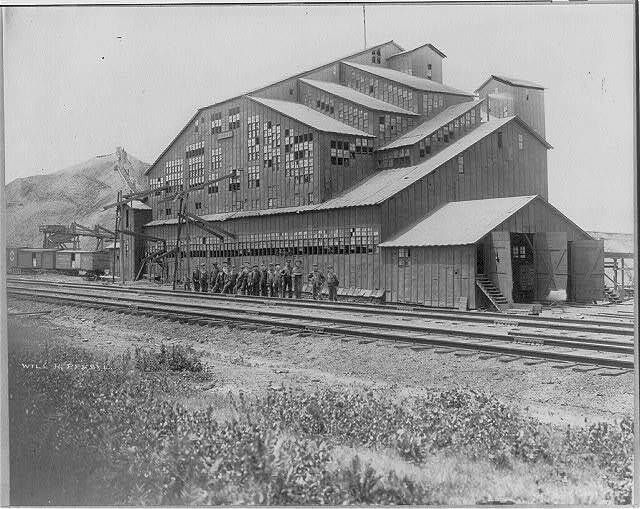
|
|
.The Alaska Colliery. One of the many such structures supporting coal mining operations that dotted the region when coal was king. The mined coal was then sent to breakers thaty were used to seperate coal into various sizes. Very young boys were used to pick out rocks and slate as the mining mixture slid down a ramp. It was fascinating to watch entire railway coal cars turned upside down to empty their cargo
|
| Click here for a list of colleries in the Mount Carmel area. |
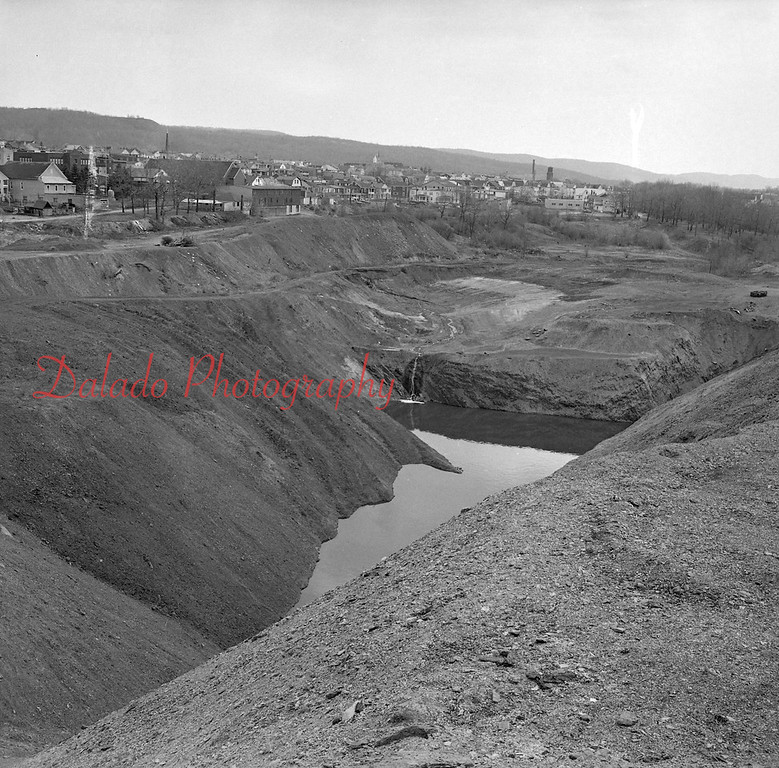
|
|
This is not Mount Carmel. But, it is a representation of coal strip mining operations in the area that often came close to the edge of communitiess, as depicted here. There were no laws that requiered mining companies to back fill these gaping monstrosities. As a result many decades passed before backfilling began on a less than earneest level. But residents of these towns regarded them as a convenient place to dispose of their garbage. That refuse would sometimes catch fire, either om purpose, probably, ot accidently. If there was an exposed coal vein beneath the fire it was susceptable to catching fire and then follow the vein well underground. Those fires would eventually die out or were put out. Unfortunately for the nearby town of Centralia, 2-3 miles away, gases from the underground fires seeped upward and endangered the lives of those living in Centralia. Ultimately the Federal government stepped in and demolished almost all the homes in that community. Interestingly these pits made for fascinating playgrounds for imaginative kids. Followig a snowfall it was a positive delight to slide down some embankments in cardboard boxes. |
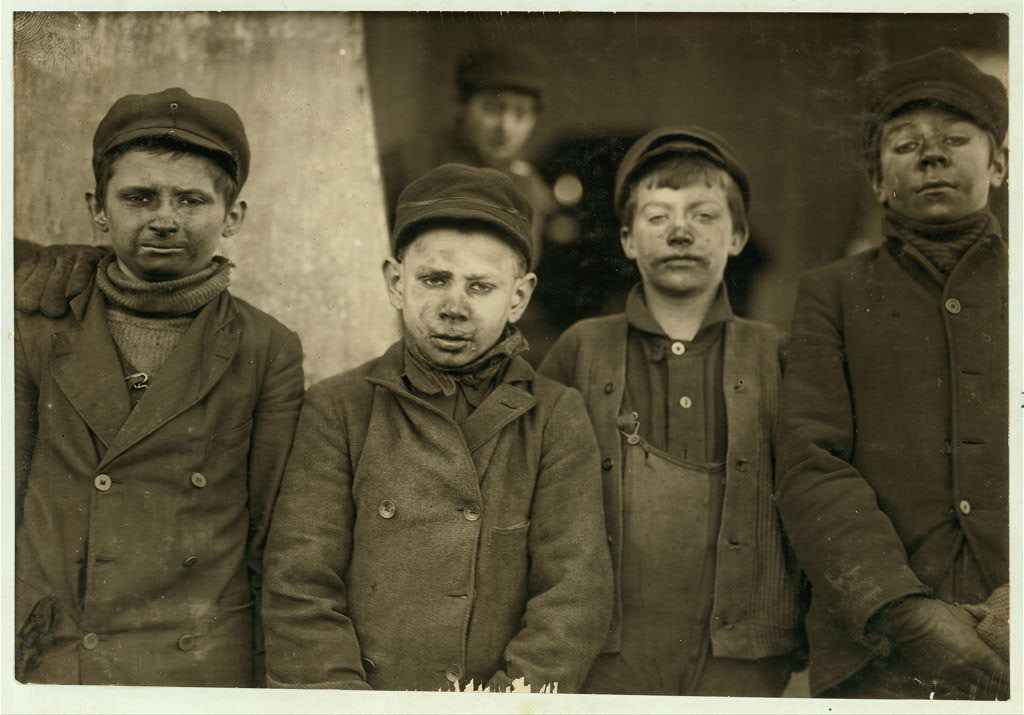
|
|
These are breaker boys whose job was to separate impurities from coal by hand in a coal breaker. Some were less than 10 years old. |
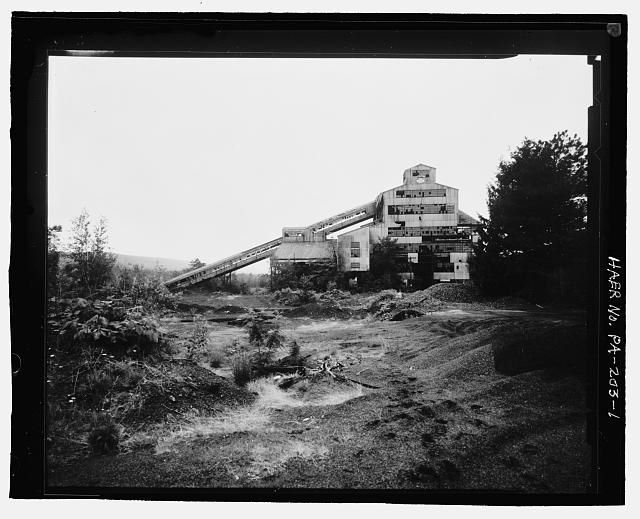
|
|
The Locust Summit coal breaker. |
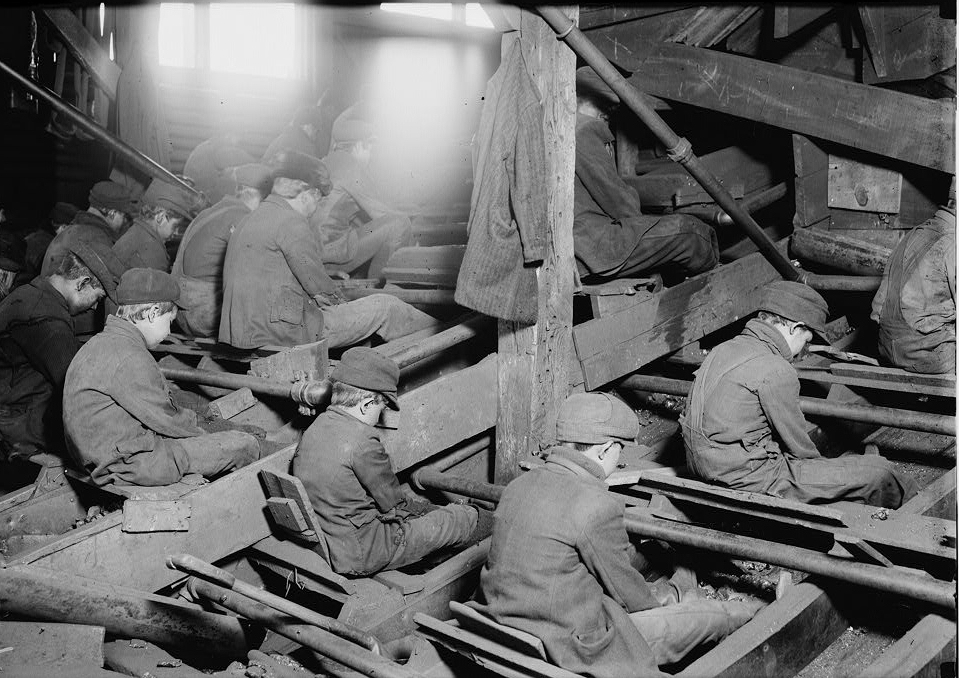
|
|
This is a very old photo of the "breaker boys" at work in, of course, a breaker |

|
|
Culm is coal refuse, That is: coal waste, rock, slag, , waste material, and slate left over from minining operations. A portion of this was some coal This stuff was dumped near the collieries and often grew enourmously. The large culm bank pictured, from an unknown area, is similar to the bank that lay on the North end of Mount Carmel, beginning on the East side of town and stretching to almost half its length. It could easily be described as a small mountain. |
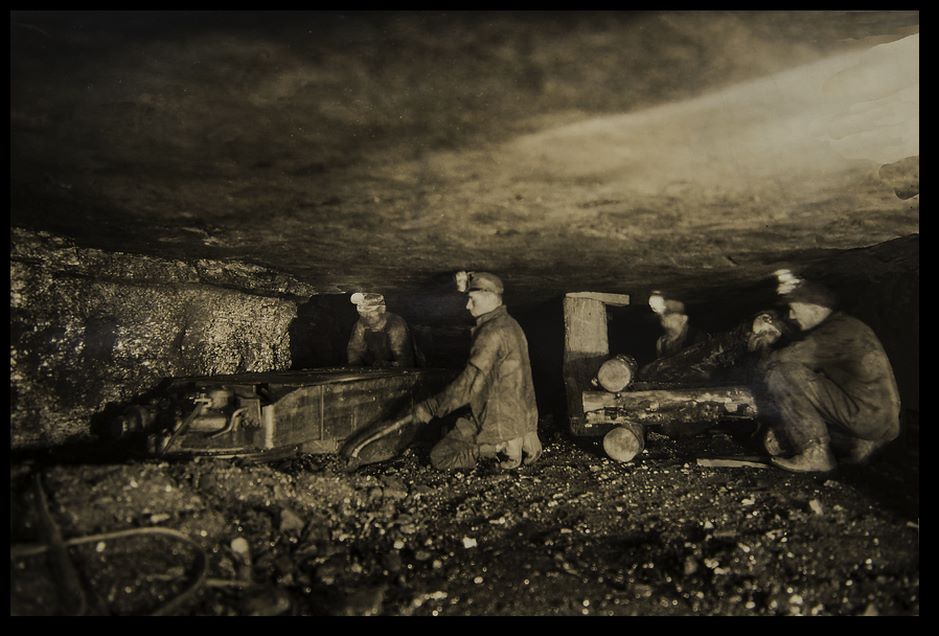
|
|
Coal mining was a nasty business. If a worker managed to escape injury or death on the job, there was an unfortunate likelyhood that his ultimate death may be caused by the ravages of black lung disease. Working conditions were nasty. Being hunched over was routine. It was dusty and constantly standig in water was a requirement. |
| Click here for a coal mining glossary. |
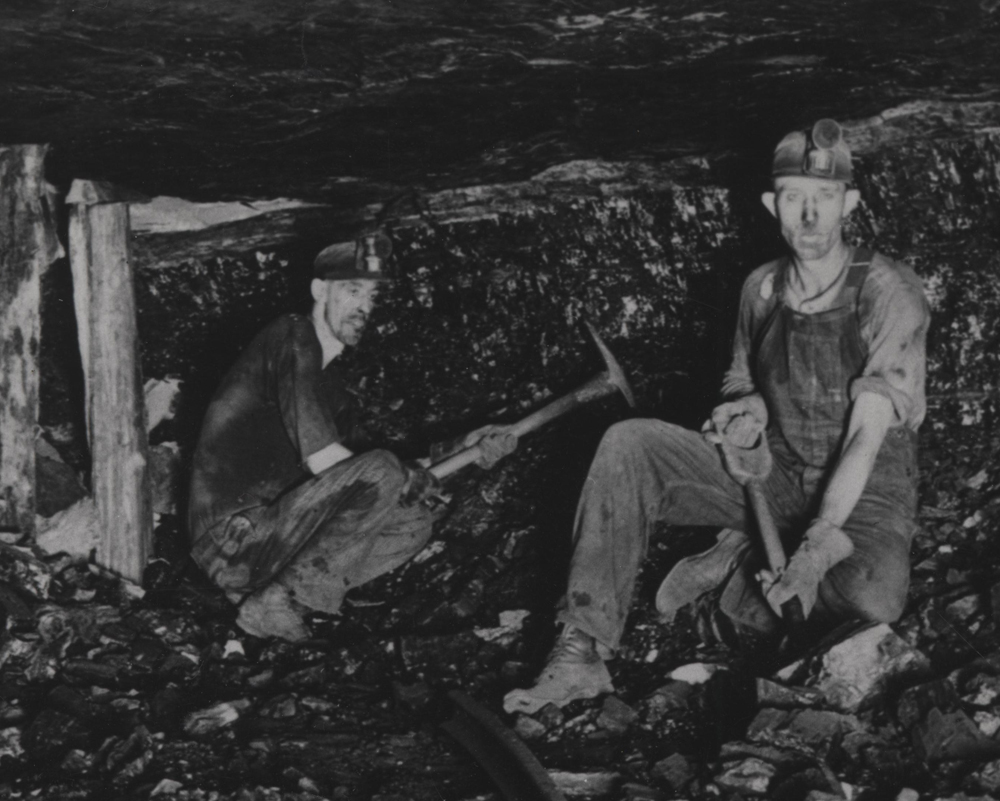
|
|
The miners above are wearing carbide lights on their helmets. When carbide is mixed with water it produces a flammable gas. The resultant light burned in front of a reflector. This provided better lighting than anything else until electricty made them extinct. |
| Click here for a 1908 Northumberland County mine accident report. |